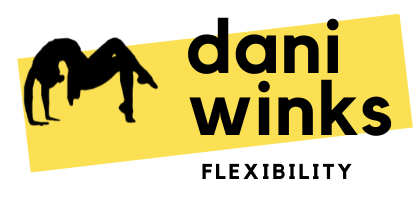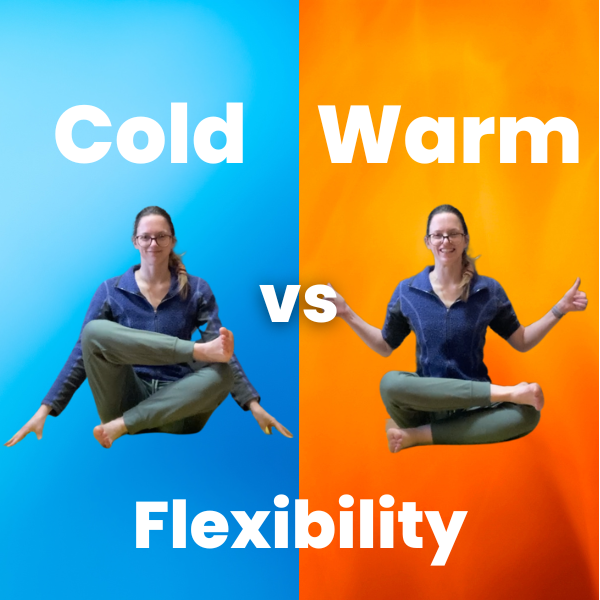“Cold” vs. “Warm” Flexibility (and How to Improve Your Cold Flexibility)
Do you ever feel like you make some good progress during a stretching session, only to have your flexibility revert back to it’s previous less-bendy state the next day? Or maybe you notice you’re able to stretch deeper after a heavy workout like weightlifting than trying to stretch randomly in the middle of the day? Do you have long-term goals to be able to touch your toes or drop into the splits without doing any kind of warm up? All of these are related to the difference between our warm vs. our cold flexibility.
“Cold” flexibility refers to our natural amount of flexibility we can achieve without doing any kind of warm up (when our muscles are “cold”). This would be like the amount of flexibility you have when you wake up in the morning, or randomly when trying to bust out a cool party trick.
“Warm” flexibility refers to the amount of flexibility we have after warming up our muscles, which will always be slightly greater than our “cold” flexibility - which is one of the reasons doing a proper warm up is important when doing flexibility work! This could refer to both the slight flexibility boost we get after doing a full-body warm up or other workout, or it could refer to the even bigger flexibility boost we get after warming up and doing some dedicated flexibility training.
For a visual example, let’s take a look at my cold flexibility for a pose I personally find super challenging: fire log pose. Despite being crazy bendy in other ranges of motion, this type of hip external-rotation-plus-flexion has always been a struggle for me (and it’s frankly not something I’ve really prioritized training) - so this is a good visual to start with:
Now let’s contrast that with how much deeper I can go after just a brief (~7 min) full-body warm up (not even tackling anything glute or hip-rotation specific):
Notice how I’m already able to open my hips a little (lower both knees and lean forwards slightly)! That’s the magic of actually doing a warm up.
Then after another ~10-15 minutes of actual dedicated flexibility training, including a mix of passive stretches and active drills to work on my hip external rotation, you can see what my current true “warm” range of motion is for this pose, which is much closer to getting my shins flat:
So visually, there is quite a dramatic difference between my “cold” fire log pose and my “warm” fire log pose. I can also attest that my hips (and knees!) feel a helluva lot better sitting in that position after a proper warm up.
The downside of warm flexibility is that it is temporary. That little boost we get from warming up and training our muscles really only lasts as long as we’re able to keep our muscles warm, which may be around 10-15 minutes tops after you stop actively training. Once our muscles start to cool down, we revert back to our “cold” range of motion.
How to Increase Your “Cold” Flexibility
If your ultimate goal is to increase your cold flexibility, whether that’s to be able to bust out a front split on demand, or to be able to comfortably sit cross-legged on the floor without having to do 20 minutes of warming up beforehand - that’s going to mean continuing to work on your warm flexibility. The more you can improve your warm flexibility, the more your cold flexibility will (slowly) increase over time! And as I’ve talked about before, one of the best ways to increase your flexibility (in general) is by focusing on active flexibility training, working on stretches and drills that aim to strengthen your muscles to support a deeper range of motion. Just like how strength training makes us stronger to be able to “use” more strength in our daily lives (ex. carry your groceries all in one trip, pick up your grandma, etc.), strength training our muscles at their end range can make our body stronger and more comfortable in those positions so we can access them more easily day-to-day. And doing a proper warm up to ensure you really are able to get to the deepest stretch possible will make your long-term training so much more effective!
If you’re not sure where to start, the Flexopedia has a huge list of both active an drills for different body parts. Or take a look through the Bendy Blog for recommended drills for different flexibility goals, like:
Or, of course, you can always drop in to one of my online classes which are (almost) always focused on active flexibility work, or check out my on-demand follow-along flexibility routines.






